“The Unenthusiastic Critic” is an occasional series in which my highly reluctant girlfriend “N.” joins me to watch classic movies that she has somehow managed to avoid seeing.
Throughout October, N. and I will be presenting our 2nd Annual Halloween Movie Marathon, watching as many horror classics as we can fit in between now and All Saint's Day. As always, spoilers abound, so if you're the other person who has never seen Night of the Living Dead, proceed with caution.
When I proudly announced to my girlfriend that I had just about settled on the line-up for this year's October horrorfest, N. met the news with her usual combination of curiosity, excitement, and unbridled enthusiasm.
She: I don't remember agreeing that this would be an annual thing.
Me: I thought that was pretty much assumed.
She: Nope, it wasn't.
Me: But it's a tradition. A sacred Halloween tradition.
She: We did it once.
Me: Right, which would make this the 2nd annual observance of the sacred tradition. And why wouldn't we do it again? Especially since it was such a huge success last time.
She: That really depends on how you define success. I seem to remember hating most of the movies we watched.
This, I remind her, is not strictly true: she more than tolerated The Exorcist, and she actually enjoyed The Thing. (Other entries were, admittedly, less successful. My girlfriend's documented fear of clowns was not enough to have made Stephen King's It worth the three hours we spent on it, and N. had some serious issues with the ending of Freaks, in which a woman is transformed into a Chicken Lady.) But none of this, she insists, is the point.
She: The point is, I didn't really enjoy that whole experience. I don't enjoy being scared, and I hate getting images in my head that I then can't get rid off. I hate scary movies. It's my least favorite genre.
Me: Except for musicals?
She: [Pause] Except for musicals. But after musicals, scary movies would be my least favorite. If you could find a way to combine a scary movie with a musical, that would probably break me.
Me: So given a choice between watching It again or watching The Sound of Music…
She: These are my choices? Really? I would probably choose It, because it's only three hours long, and The Sound of Music was like five hours long.
Me: It was not–
She: It was really fucking long.
Me: I'm curious now: if it was a choice between It, The Sound of Music, and killing yourself…
She: Hmmm. I guess I would choose It, and then killing myself, and then The Sound of Music.
Me: So, see? You actually love scary movies. I knew it.
The truth is, however, I had a hard time choosing films for this year's marathon. I was determined to avoid the mistakes of last year, in which we started too late and made some questionable choices. (It really is shitty: what was I thinking?) But there really aren't a lot of scary movies I consider essential viewing that N. hasn't already seen. (Despite her avoidance of horror movies, she has already seen many of my favorite classics—including Psycho, Rosemary's Baby, The Shining, and An American Werewolf in London—as well as some decent modern entries I might have chosen, like The Blair Witch Project, The Ring, The Descent, 28 Days Later, and Paranormal Activity.)
Still, I think we've settled on a good slate of seven or eight films—a mixture of classics, new classics, and cult horror goodies—which we'll be watching throughout October. And we're beginning with an undisputed watershed film, one that pushed the envelope for American cinema and defined the rules for an entire sub-genre of horror that is still going strong.
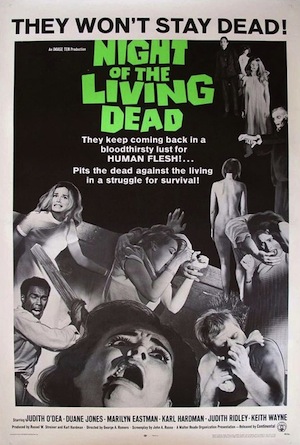 What We Watched: Night of the Living Dead (1968), directed by George A. Romero, written by Romero and John A. Russo. Starring Duane Jones, Judith O'Dea, Karl Hardman, Marilyn Eastman, Keith Wayne, Judith Ridley, Bill Cardille, Kyra Schon, and a lot of undead extras.
What We Watched: Night of the Living Dead (1968), directed by George A. Romero, written by Romero and John A. Russo. Starring Duane Jones, Judith O'Dea, Karl Hardman, Marilyn Eastman, Keith Wayne, Judith Ridley, Bill Cardille, Kyra Schon, and a lot of undead extras.
Why I Chose It: Despite the fact that the word "zombie" is never once used in Night of the Living Dead—the revenants here are most often referred to as "ghouls" or "those things"—Romero's classic is the granddaddy of all zombie movies. Though there had been the occasional animated-corpse-raised-through-voodoo in other movies, Romero invented the full-on zombie apocalypse we've come to know and dread so well. Released at a time when images of race riots, protests, hippies, assassinations, and the war in Vietnam were on every television set, Night of the Living Dead evokes these fears of social unrest and moral decay in ways that were both deliberate and—if Romero is to be believed—accidental, establishing zombies as the perfect blank-slate, all-purpose metaphor for the widespread disintegration of the social order.
It's also just an incredibly crafted, terribly effective, low-budget independent film that—despite its countless imitators—still seems fresh today.
What N. Knew About It Going In: As always, I quiz my girlfriend on what she might have picked up about Night of the Living Dead through simple cultural osmosis.
Me: So what do you know about this movie?
She: I don't know much about this one. I assume it involves zombies, given the title.
Me: Good guess.Do you like zombies?
She: No, I've never found zombies particularly scary or interesting. I kind of hate The Walking Dead, but that's mostly because I kind of hate all the people on it—the kid, the wife—so I'm rooting for the zombies. I liked Shaun of the Dead. Was 28 Days Later a zombie movie?
Me: Depends on your definition. I'd say yes, but I think the real zombie connoisseurs—
She: The zombie purists?
Me: —the true zombie purists would say no. But to me, that's splitting zombie hairs.
She: Oh, and I know this movie has a black hero. A black man saving some white chick.
Me: You only know that because I told you, when I was trying to get you vaguely interested in watching it.
She: What year was this made?
Me: 1968. Independent movie, made for virtually nothing, with a more or less totally unknown cast.
She: So, another winner, is what you're telling me.
Me: But hugely influential, obviously.
She: Except that, in every movie since, the black guy is the first to die. So we've actually gone backwards.
How It Went: So far, so good.
Night of the Living Dead opens with a young woman named Barbra (O'Dea) and her brother Johnny (Russell Streiner), going to visit the grave of their father. I honestly don't believe Romero probably intended the film to be a conservative morality play, but it's worth noting that Johnny exhibits a youthful, hipster lack of respect both for his father's memory ("I don't even remember what the man looked like," he says) and the entire ritual of honoring the dead. ("Hey, I mean, prayin's for church," he tells his sister, trying to hurry her along—but she points out that Johnny doesn't go to church, either.) This disregard for propriety and piety may be what summons the end of the world.
Me: He's kind of a dick.
She: Yep. That's why he's going to die first.
He is a dick: he reminds Barbra how he used to tease her because she was afraid of the cemetery, and he begins to scare her again now. "They're coming to get you, Barbra," he sing-songs. He points to a man shambling on the other side of the graveyard. "Look, here comes one now."
Unfortunately, the man—if that's what you want to call him—is coming to get them: in fact, thanks to some clumsy editing, he's almost instantly beside them, and attacking Barbra in the inarticulately moaning hunger of every movie zombie ever since. Johnny wrestles with him, in a fight that is clearly neither choreographed nor employing professional stunt men. In a blink-and-you-miss-it moment, Johnny hits his head on a gravestone and dies. The shambling, grunting man chases Barbra, who—in time-honored movie-heroine fashion—promptly trips and falls.
She: And, of course, you trip and fall.
Me: It's those shoes you all insist on wearing.
She: Hey, I can run in my shoes.
Me: You can barely walk in your shoes. In the event you're ever pursued by zombies, your best bet is to stand your ground and use your shoes as weapons.
Despite some rough editing—and, to be frank, some fairly rough acting—this opening scene has a dynamic energy that heralds the good things to come. It is bloodless—quite tame compared to the rest of the movie, and not yet so different from other B-movies of the time—but Romero's canted angles, erratic camera motion, and raw-feeling footage give it an immediacy that is thrilling and engrossing.
Barbra manages to get into their car, and—though Johnny had the keys—to coast her way down the hill away from the ghoul.
She: Lucky they parked on an incline.
As darkness descends, and as more ghouls begin to gather, Barbra makes her way into an apparently empty house, where—in the first truly gruesome shot of the film—she discovers that the previous owner is…indisposed.
Barbra is seriously losing her shit at this point. While that reaction is a refreshingly realistic one for a horror movie character, it does not make her protagonist material, so thankfully our leading man arrives in the form of Ben, a man who has shown up at the house in hopes of getting some gas out of the locked pump out back. Ben is level-headed, resourceful, and able to kick a little zombie ass.
He is also African-American, which lends Night of the Living Dead a level of social subtext that was not, apparently, intended. Romero swears that this was a case of color-blind casting—Jones was simply the best actor among the group of friends and acquaintances he assembled to make this movie—and Ben's race is never once mentioned in the film. Romero has said that, at the time, they thought they were being "hip" by not changing the script to reflect the actor's race, but that in retrospect "there's a theme there that we missed."
In truth, that the subject of race remains subtext instead of text is probably to the film's advantage: instead of turning Night into a ham-fisted "issue" picture, Jones' race just makes the already tense social dynamics of the movie hum on an unintended but highly effective frequency. After several consecutive summers of riots across America, Night of the Living Dead was already playing on the (white) establishment's fears of social (specifically racial) unrest, and so Ben's forcing his way into the house occupied by Barbra and tearing up the place—albeit in self-defense—just taps further into those fears in complicated ways. Barbra, at first, looks just as scared of him as she is of the zombies, but he's clearly the hero of the movie: the most capable man in this uncertain new time.
Ben, after setting some zombies on fire, starts boarding up the place—which seems to have a surprising amount of loose lumber lying around for just that purpose—while Barbra basically sits on the couch and drools.
She: I'm not sure how he can tell she's not one of them. She shows no signs of life.
Me: Well, she's had a hard day.
She: I don't care! She needs to pull it together.
Me: You chicks are no help in a crisis.
She: I don't know why you have to make it a gender thing! What can't it just be that she sucks?
Ben and Barbra share their zombie-survival stories in a couple of overwrought monologues, and this sharing of feelings turns out to be a mistake: Barbra shifts gears from catatonic to hysterical, and decides she has to go look for Johnny. Ben calms her down in the time-honored way of all action movie heroes of the age: by socking her across the jaw, after which she passes out in shock.
Once again, something that audiences otherwise wouldn't have thought twice about at the time takes on a whole different dimension because of Jones's race.
She: Damn!
Me: Do you suppose that was the first time a black man hit a white woman on film?
She: I would imagine so. She probably wasn't the only person who fainted from that.
One of the things that amazes me on this rewatching of Night of the Living Dead is how little the zombie movie has changed, and how the rules and tropes Romero establishes here are the same ones in use today: the herd of zombies, the group of strangers huddled for survival, the tense stand-off. Even some visual bits—like a survivor backed up against a window or doorway, while a swarm of zombies grab at them from outside—are consistent.
The most important factor I notice is that, in nearly every case, zombies are simply an environmental, background threat: the real danger comes from living people being assholes. Zombie movies are disaster movies, not monster movies: it's the power struggles and poor decisions of humans under pressure that constitute the greatest threat. This is a dynamic that can be traced all the way down to The Walking Dead, but the template was formed with Night of the Living Dead.
The social cooker is turned up when Ben and Barbra discover that there are five people hiding in the basement of the house: a middle-aged husband and wife named Harry and Helen (Hardman and Eastman), their injured daughter Karen (Schon), and a young couple named Tom and Judy (Wayne and Ridley).
Me: Judy's kind of hot.
She: Judy's kind of stoned.
Me: '60s hot.
She: High hot.
Proving that the filmmakers are—tempermentally, at least—on the side of social disorder, establishment-figure Harry immediately becomes the real antagonist of the movie. He takes an instant dislike to Ben, and launches a power struggle by arguing that the basement is the safest place for everyone to ride out the zombie apocalypse. In truth, the end of the movie will prove that he was right, but he's such a prick even his wife doesn't side with him. ("That's important to you isn't it?" she says, icily. "To be right, and for everyone else to be wrong.")
She: Marital problems don't go away in a disaster. What's the saying? The true test of a relationship is how you travel together, and how you ride out a zombie apocalypse together.
Judy goes downstairs to watch the kid, while Helen goes upstairs and bonds with the still catatonic Barbra. "Her brother was killed!" Helen tells her husband.
She: "And she was punched in the face by a black man!"
Me: "I don't know which is worse!"
The first half of Night of the Living Dead could be a particularly dark episode of The Twilight Zone: there are a few gruesome moments (like Tom using a kitchen knife to slice off the fingers of a zombie sticking its hands through the window), and a few R-rated aspects (like the naked female zombie who wanders through the frame occasionally), but for the most part it's not noticeably more explicit than other horror movies of the time.
This changes, however, in the second half, around the time Ben, Tom, and Judy decide to make a break for the gas pump. The plan goes seriously awry: surrounded by swarming zombies, they accidentally set the gas on fire, and set the truck on fire as Tom and Judy try to drive it away. The truck explodes into flames, killing Tom and Judy, and providing the undead with their first taste of cooked meat. The scenes of zombies chowing down on the leg bones, internal organs, and intestines of Tom and Judy are gruesome even by today's standards.
When Ben tries to get back in the house, Harry won't open the door to let him in: Ben kicks the door in, works with Harry to board it up behind him, and then delivers a much-deserved beat-down on the cowardly man. Again, Ben's race is never mentioned, but—only a year after Sidney Poitier's controversial slap of Larry Gates in In the Heat of the Night—the sight of a black man righteously kicking a white man all over the house must have raised a few eyebrows.
It becomes harder and harder to believe that Romero and his crew were not conscious of the racial subtext when the survivors see a television report about a posse of cops and volunteer rednecks (exclusively white) with torches, guns, and german shepherds, who are roaming the county hunting zombies.
She: You know what's scary to me? A bunch of white dudes with guns.
Me: They're performing a public service, trying to stop the ruckus.
She: They don't have fire hoses? You need fire hoses to do this kind of crowd control properly.
Meanwhile, Harry—still fuming about his beatdown—keeps eyeing the gun that Ben is holding.
She: The white man is not comfortable with the black man having the gun.
When the next wave of zombies attacks the house, Harry makes his move, and grabs the gun from Ben. But Ben smacks him with a handy piece of lumber, gets the gun back, and coldly shoots Harry in the gut. Harry staggers down into the basement, once again demonstrating the absence of stunt men on this movie.
She: Nobody falls down the stairs like that.
Since I haven't said much about the craft here, let me pause here for a word of appreciation for Mr. Romero. Working on a shoestring budget, and with a more or less total lack of special effects beyond makeup, Romero stages some very effective scares and thrills using nothing more than dynamic camera movements and the stark contrast of light and shadows. Despite its rough edges, Night of the Living Dead is a masterclass in independent filmmaking.
This is particularly evident in what is probably the most memorable—and scariest—scene of the movie. Looking back after more than 40 years of zombie films, we know exactly how things are going to turn out for little Karen, lying wounded in the basement. ("Kill that bitch!" my girlfriend said, the first time she saw her.) But audiences at the time didn't know the rules of zombie movies, and so many of them were probably not expecting things to take quite so dark a turn. Even if they were expecting it, the way Romero stages it makes it just incredibly creepy.
Helen—having just escaped the zombie attack upstairs—races down into the basement, to find sweet little Karen calmly eating her father.
While Karen dispatches her mother with a garden trowel—and with Romero stealing liberally from the shower scene in Psycho to make the scene feel much more graphic than it actually is—my girlfriend uses this moment to elaborate on her basic philosophy of horror movies.
She: See? I knew it! They should have killed her the moment she got bit.
Me: That's your answer to everything.
She: It is the answer! Kill this bitch, kill the bitch in The Exorcist, kill everybody in The Thing.
Meanwhile, upstairs, as the zombie swarm overruns the house, Barbra meets her death at the hands of her reanimated brother Johnny.
Ben fights little Karen for possession of the basement, and locks himself in. After spending the entire movie arguing with Harry that the cellar wasn't safe, Ben becomes the last survivor by…locking himself in the cellar.
Me: You know, there's an argument to be made here that this is all Ben's fault. His plan to get gas got Tom and Judy killed, his insistence on staying upstairs got everyone else killed, and he killed Harry himself.
She: Whatever. He's the only black man in movie history to survive a horror movie, so he must have done something right.
But, of course, Romero is a more nihilistic director than that, and has one last cruel joke for us. Waking up in the morning, Ben wanders upstairs to find the sun rising and the zombies gone. He peeks out the window to make sure the nightmare is really over—and is shot in the head by the roving rednecks, who have mistaken him for a zombie.
She: Son of a bitch! What was he, holding a bag of Skittles?
Over grainy, newspaper-style stills of the posse throwing Ben on the funeral pyre—which just emphasizes the parallels between Night of the Living Dead and the news footage of the time—the movie comes to a quiet, unbelievably depressing end.
The Verdict
As one mark of what a quantum leap forward Night of the Living Dead was for horror movies, I recommend reading Roger Ebert's essay on his viewing of the film in 1968. This was an era when monster movies were campy and fun: Rosemary's Baby came out the same year, but Hammer horror movies and the campy horror of Roger Corman were still the standard. As such, parents thought nothing of dropping off their very small children at the theater for a creature-feature, which—in Ebert's account—led to some seriously traumatized children.
"The kids in the audience were stunned," Ebert writes. "There was almost complete silence. The movie had stopped being delightfully scary about halfway through, and had become unexpectedly terrifying. There was a little girl across the aisle from me, maybe nine years old, who was sitting very still in her seat and crying."
Notable at the time for its excesses, Night of the Living Dead now stands out just as much for its restraint: as special effects and budgets have grown exponentially more bloated over the years, Romero reminds us here how much can be done with a single set, low-budget effects, high-contrast shadows, and fantastic sound design. I can't help but feel that the recent move towards "found footage" movies is, in part, a high-concept workaround to justify getting back to the kinds of basics that work so well in Night of the Living Dead.
But what did my girlfriend think about it?
She: It was interesting. The acting was not great. But I thought—aside from some choppy editing, which was probably necessary to get around some budget problems—it was shot in a really interesting way. There was some great camera work in it, and I enjoyed the play of shadows and light. I love the black and white cinematography, which creates a whole different atmosphere. And I thought the sound was great: there were a lot of moments where there was no dialogue, and the backing track just creates this really eerie mood.
Me: There's another black-and-white movie from the 60's on our list, which is, to me, the Citizen Kane of haunted house movies. So you've got that to look forward to.
She: And now that you tell me that the lead actor was a case of color-blind casting, there's a whole other layer of things going on that I bring to this, which weren't necessarily intended: his slapping a white woman, the image of white men with dogs and guns…
Me: I still have trouble believing it wasn't intended. It may not have been in the original script, but they had to be hyper-aware of it while they were filming, and so many things seem designed to play up that aspect of it.
She: Right. Those shots at the end of them dragging his body out, that had to be intentional: it's so evocative of newspaper photographs of the civil rights era.
Me: Yeah, I don't think any of that is an accident. So overall, you liked it?
She: Yeah, I liked it. It wasn't bad.
Me: That's high-praise from you.
She: Well, first zombie film, that's very seminal. I respect that. I respect the classics.
Me: Did you find it scary at all?
She: No, those zombies are a little too ridiculous to be scary. And zombies aren't really the way to scare me anyway. They're gross, and if you show me images of them eating intestines, I'll be grossed out, but they're not scary. On the other hand: white people with guns? That's scary. I was way more scared of whitey then I was of zombies.
Me: With, it turns out, good reason. That turned out to be the final threat.
She: So, my take-away from this movie? Don't trust the white people. But that's just the story of my life.
Next Up for The Unenthusiastic Critic: Our Halloween marathon continues with Sam Raimi's 1981 cult classic The Evil Dead.


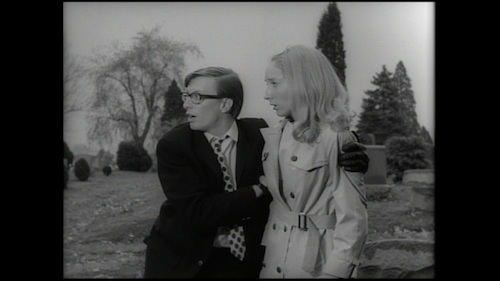
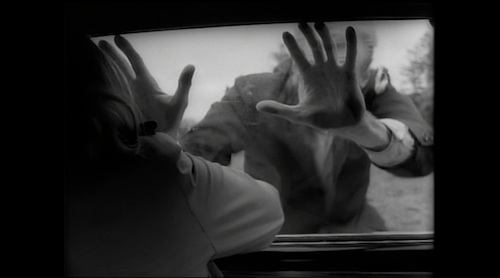
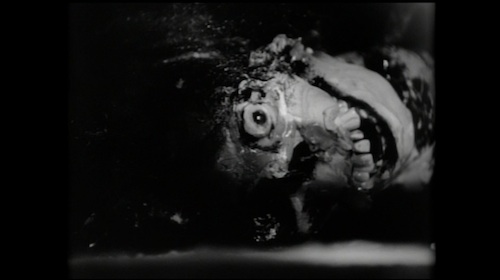
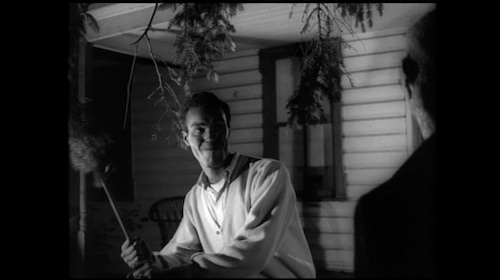
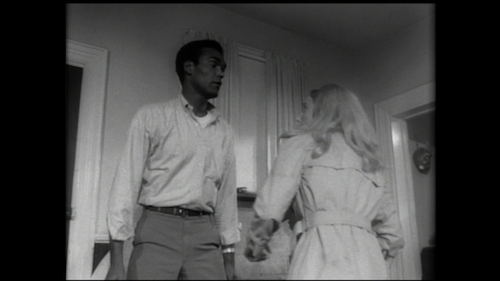
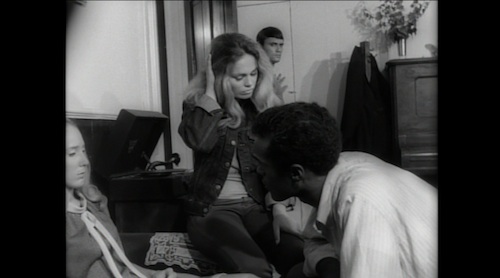
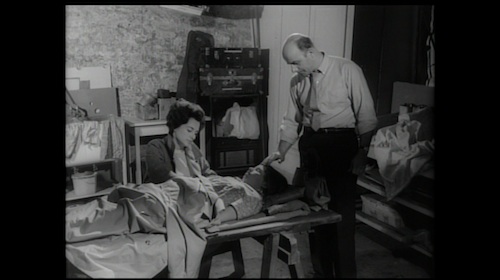
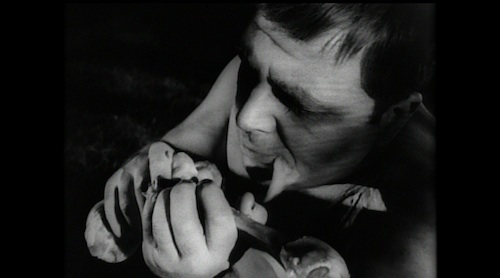
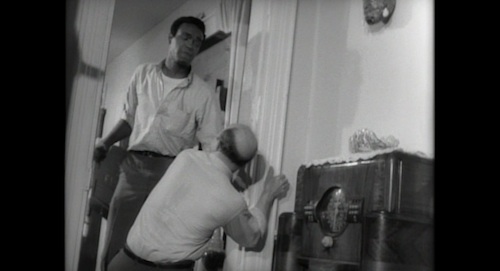
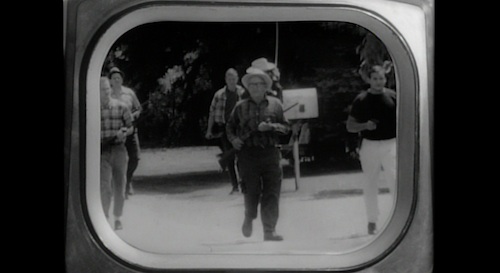
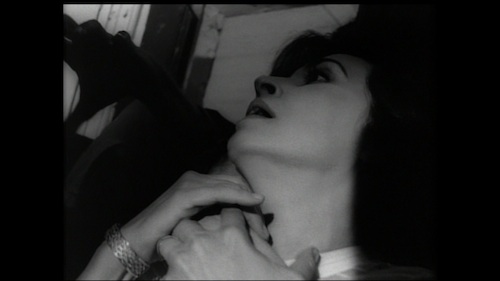
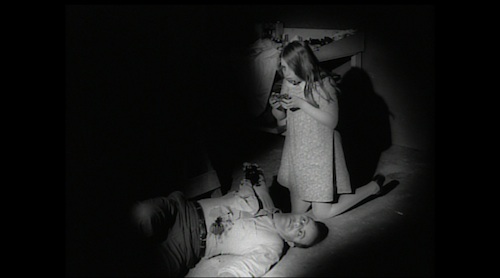
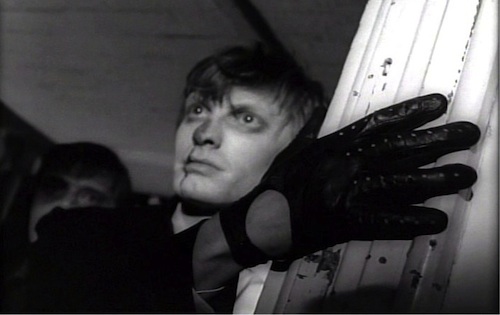
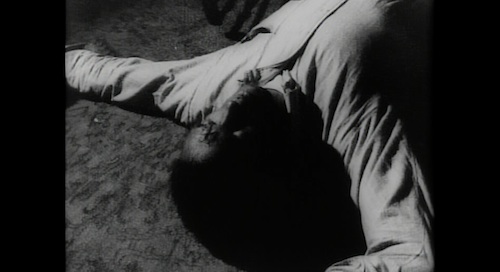
3 thoughts on “NIGHT OF THE LIVING DEAD (1968)”
You two!
Hysterical and insightful, as always. Truly sir – though I enjoy and trust your point of view – THIS is my favorite column. By far. I always read the blog, but haven't commented lately because I don't speak Whovian (trying to remedy by starting at the beginning – and I can only say, so far, that I hope the next Doctor has a better . . . I don't know . . . bedside manner?)
Can I say how pleased I am that N liked this film?
I sympathize with N's pain when it comes to musicals, because I am also not a big fan (except for A Chorus Line wink-wink – nudge-nudge.) I agree with her that bad horror films are full of cheap scares, easy outs and gross-out effects. Who doesn't jump when there's a sudden loud noise? Who doesn't pump their fist in a dark theater when you see a gory cut/slide? No? Just me? Okay then.
Zombie films are my favorite BECAUSE the monsters are us and the stories are essentially about our survival as species. The best ones make you ask questions about yourself. Who would I become if the chips were down? Who would I trust? What am I REALLY capable of? Would I be civilized? Barbaric? Feudal? Would I smother a baby to hide a village? Good Zombie films explore these human themes, and mine them to truly horrifying effects.
All that aside, You both inspired me to have a re-watch tonight.
PS. I highly recommend Trick 'r Treat for next year's inclusion.
PPS. 28 Days qualifies.